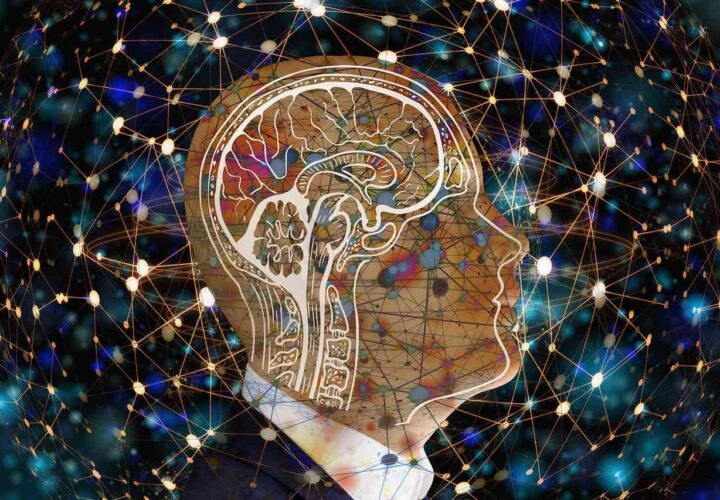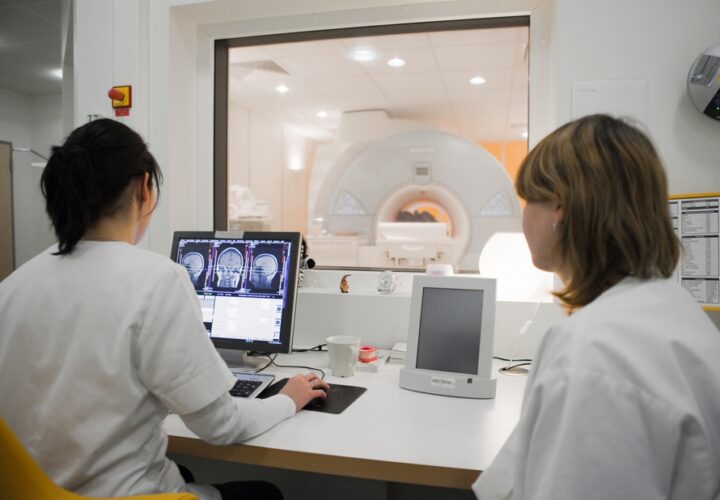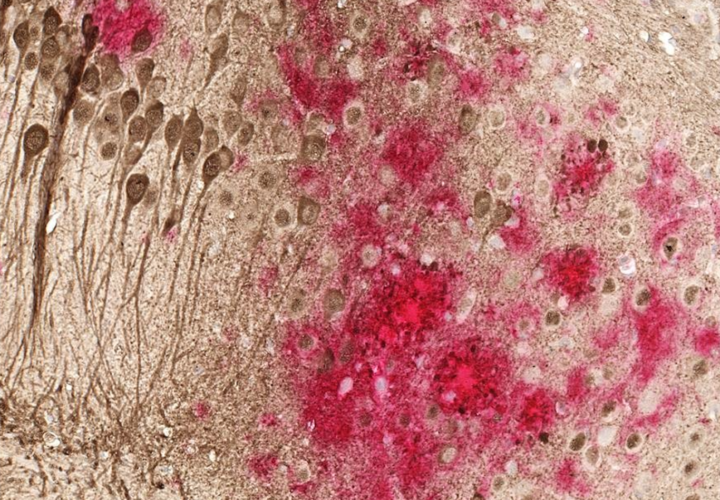You might've heard about Alzheimer's proteins like beta-amyloid and tau. Scientists are increasingly interested in whether TDP-43 could be an important target for dementia tests and treatments.
Scientists still aren’t sure what causes Alzheimer’s, but they have figured out that the progression of this disease is closely linked to the buildup of certain kinds of proteins in the brain. When the body’s proteins are working correctly, they’re not only harmless, but necessary, doing important jobs to help bodies grow and function. But sometimes, proteins malfunction, and they can gumming up communication between neurons — a situation that eventually leads to the death of brain cells. The best known proteins that play some role in Alzheimer’s and related forms of dementia are beta-amyloid proteins, which can build up into a sticky plaque in the brain, and tau proteins, which can clump and tangle, derailing brain function and killing off cells.
A new wave of Alzheimer’s treatments for the disease, including the recently FDA-approved Leqembi and Aduhelm, are being designed to target the best-known of these proteins linked to Alzheimer’s risk, eliminating beta-amyloid or tau in order to slow down the progression of the disease. But, there are other problematic proteins that might be involved in Alzheimer’s and other dementias, too — and scientists are sounding alarms that these lesser-known proteins deserve a closer look. One of those is a TAR DNA binding protein called TDP-43.
In 2006, researchers found this new protein deposit implicated in dementia. It tends to show up in clumps in the brains of people with frontotemporal dementia and amyotrophic lateral sclerosis. Gradually, researchers have learned TDP-43 also aggregates in the brains of about half of all people living with Alzheimer’s. Compared to healthy older individuals, there are lower levels of TDP-43 in the blood of some people with frontotemporal dementia. In Alzheimer’s, these levels are even lower.
TDP-43 isn’t always a problem protein: In a healthy brain, its role is to help copy the genetic instructions for making proteins. If the TDP-43 starts clumping up, it could lead to eventual neurodegeneration. Scientists haven’t yet learned what makes these proteins go haywire, but they do consider them useful clues that can tell us when Alzheimer’s is on the horizon. And these protein clumps can be identified early enough, the idea is that it’s possible to get ahead of it and stop further damage from being done.
Spotting Alzheimer’s earlier
Scientists believe deepening our knowledge of this lesser-known protein could help make it easier to diagnose dementia, thereby connecting people with better treatment options, earlier.
Dementia is notoriously difficult to accurately diagnose. Symptoms from different forms of dementia can overlap, and patients might have more than one dementia at a time, making it even harder to get a clear picture of what’s happening. Without an accurate diagnosis, doctors can’t necessarily recommend the best course of care.
The most definitive diagnostic methods available so far do revolve around looking for beta-amyloid in the brain, by sometimes pricy amyloid PET scan, or by invasive lumbar puncture. More affordable, more accessible diagnostic methods are urgently needed.
Many of these tests aren’t accurate enough just yet, and the developers of these new diagnostic tests hopeTDP-43 could help. Screening for build-ups of this protein in the brain too could complement the information about the presence of beta-amyloid and tau to give the accuracy of these blood tests a boost.
Treatments that target TDP-43
In addition to better diagnostics, drug developers are looking to TDP-43 as a possible target for drugs designed to help slow or stop dementia.
Drugmaker Annovis Bio is currently developing one such drug, buntanetap, that prevents TDP-43 buildup as an approach for stopping disease progression. Buntanetap comes in capsule form. It works by halting the formation of several of these known, problematic protein plaques and deposits, including amyloid, tau, and TDP-43. It’ll soon commence Phase 3 trials for treating the mild and moderate stages of Alzheimer’s, Parkinson’s, and other neurodegenerative diseases.
Researchers believe that the future of treating Alzheimer’s and dementia involves more than one drug — targeting multiple proteins and pathways. Buntanetap and other drugs that target TDP-43 could be important pieces to solving the Alzheimer’s puzzle.



